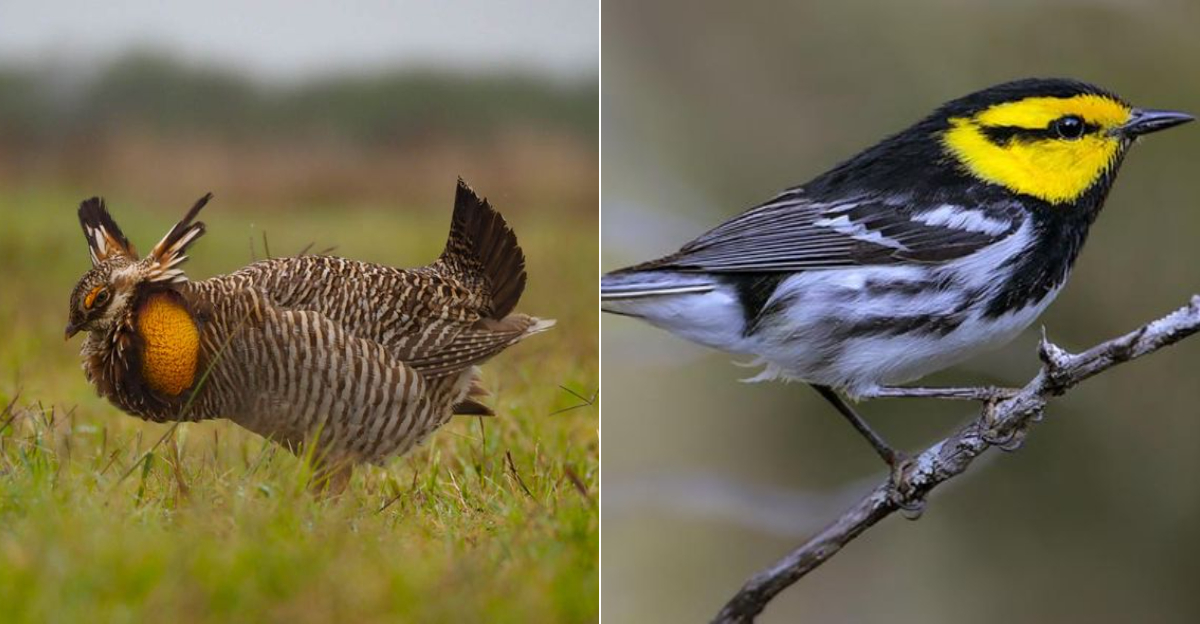I’ve always been fascinated by the incredible diversity of bird species that call Texas home.
Last summer, while exploring both the rugged desert landscapes and pristine coastal areas of the Lone Star State, I encountered some truly remarkable feathered residents.
These five extraordinary birds represent some of the most unique avian treasures you might spot on your next wildlife adventure.
1. Whooping Crane: The Majestic Winter Visitor
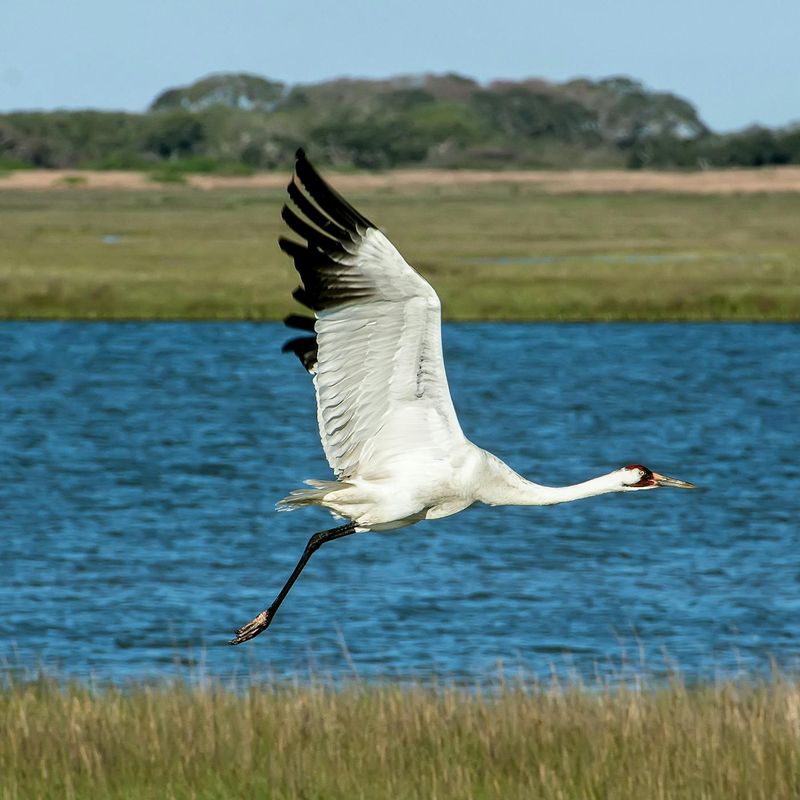
Whooping Cranes are impossible to miss against the coastal wetlands.
Once reduced to just 15 birds worldwide in the 1940s, their population has slowly rebounded to around 500 today. These magnificent birds migrate 2,500 miles from Canada each winter to feast on blue crabs and berries along Texas’ Gulf Coast.
Their haunting calls echo across the marshes at dawn, a sound that nearly disappeared forever. Their recovery represents one of conservation’s greatest comeback stories.
2. Attwater’s Prairie-Chicken: The Dancing Prairie Dweller
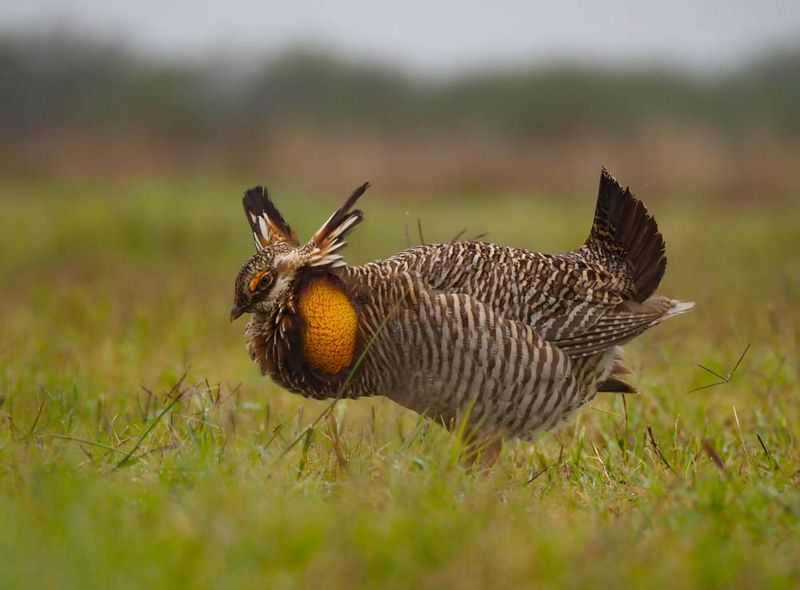
“Boom! Boom! Boom!” That’s the sound of male Attwater’s Prairie-Chickens performing their elaborate courtship displays across the coastal prairies.
Once numbering nearly a million birds across coastal Texas and Louisiana, fewer than 100 remain today. Their decline mirrors the loss of native coastal prairie – an ecosystem reduced to less than 1% of its original extent.
Conservation breeding programs offer hope for these charismatic birds. Visiting their spring mating grounds (called leks) remains one of Texas’ most extraordinary wildlife experiences.
3. Golden-Cheeked Warbler: Hill Country’s Singing Gem
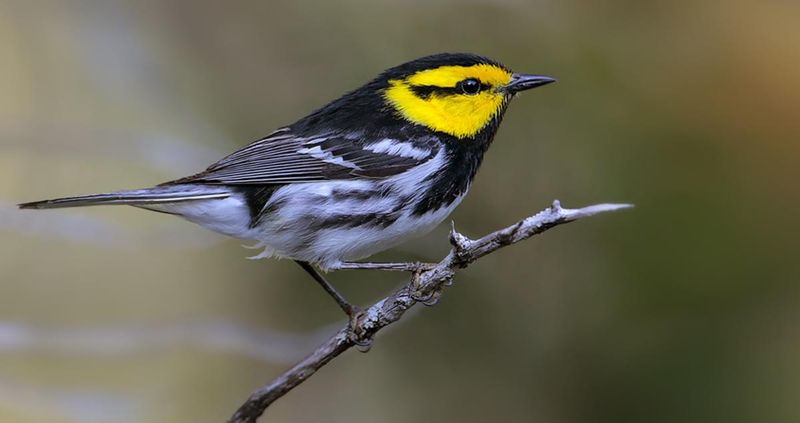
A tiny songbird with a voice that belies its size!
Golden-cheeked Warblers sport distinctive yellow faces contrasted with black throats – a striking pattern I spotted while hiking Edwards Plateau last spring.
What makes these birds truly special is their exclusive breeding habitat. Nowhere else on Earth do they nest except in the mature juniper forests of central Texas! They construct their nests using shredded juniper bark, a material they can’t find anywhere else.
4. Northern Aplomado Falcon: Desert’s Swift Hunter

With slate-blue wings, rusty underparts, and bold facial markings, these medium-sized falcons bring a tropical flair to the Chihuahuan Desert landscape.
After disappearing from the U.S. in the 1950s, reintroduction efforts have established small populations in South Texas.
Unlike many raptors, they don’t build their own nests but repurpose old stick nests of other birds. Their recovery symbolizes hope for restoring lost species through dedicated conservation work.
5. Piping Plover: The Shoreline Survivor
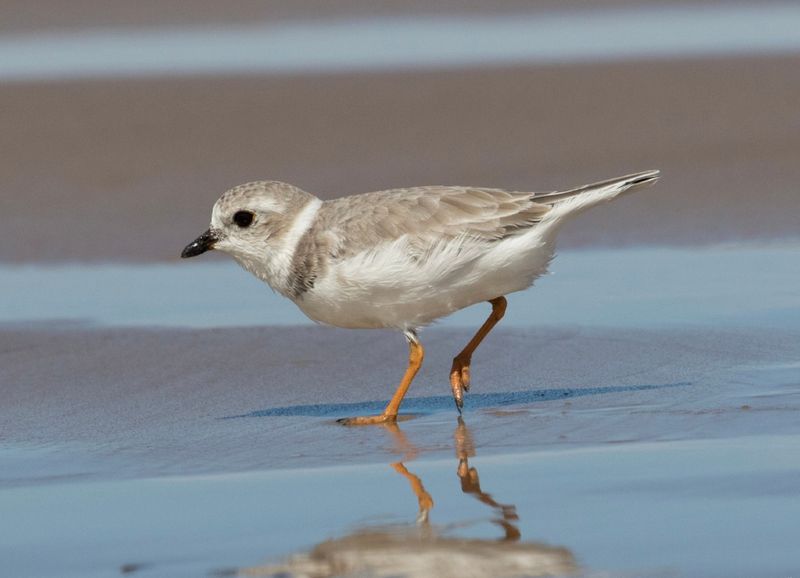
Tiny, sand-colored, and perfectly camouflaged!
These small shorebirds scurry along Texas beaches on orange legs, pausing occasionally to pluck insects and crustaceans from the sand.
Their nests? Just shallow scrapes in open beach sand, making them vulnerable to storms, predators, and unwitting beachgoers.
A black band across their forehead and another around their neck helps identify these endangered birds during their winter stay along Texas coasts.
Beach development and human disturbance threaten their recovery. When you see roped-off beach sections during summer, you’re witnessing crucial protection efforts for these little birds.
